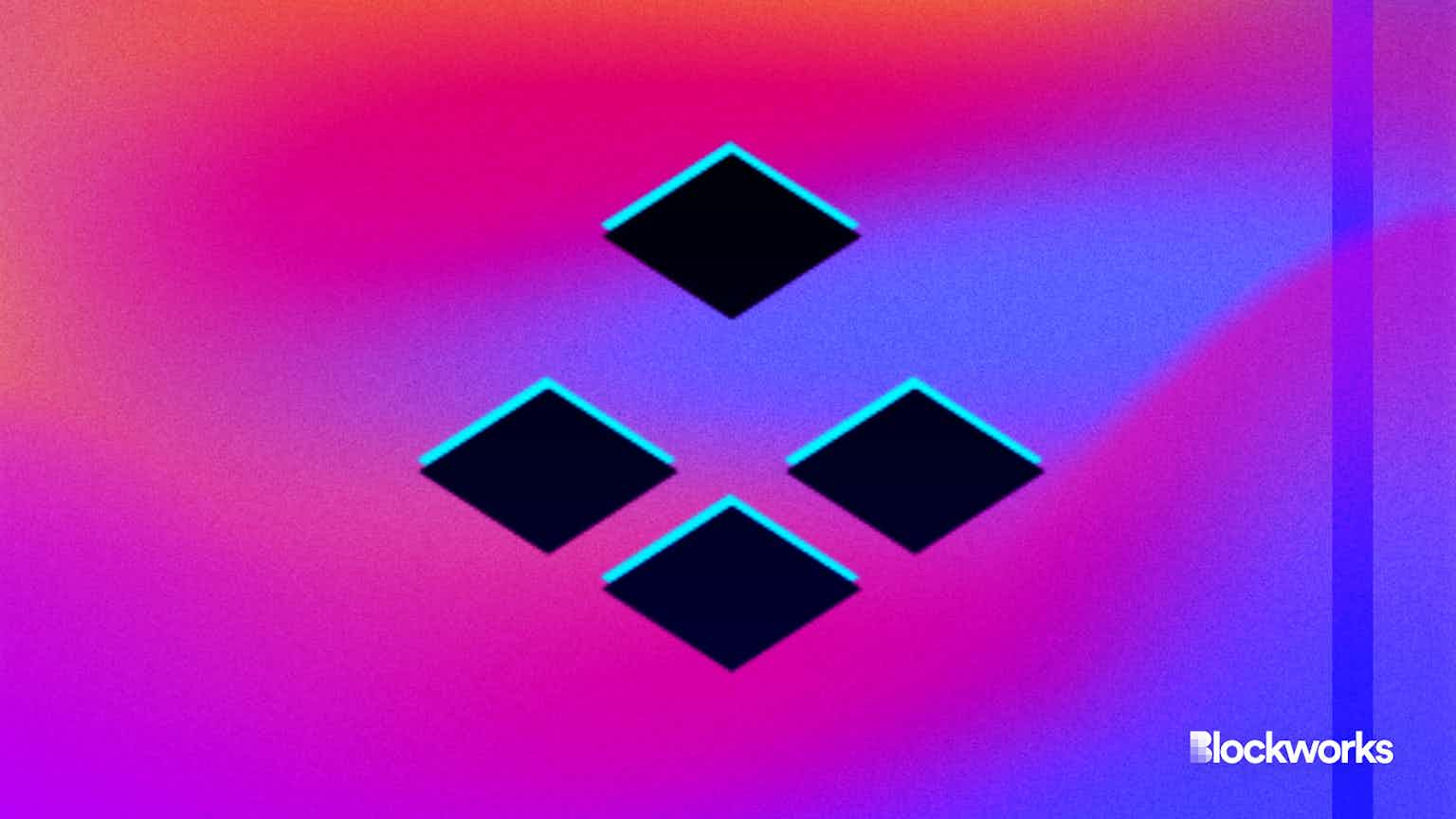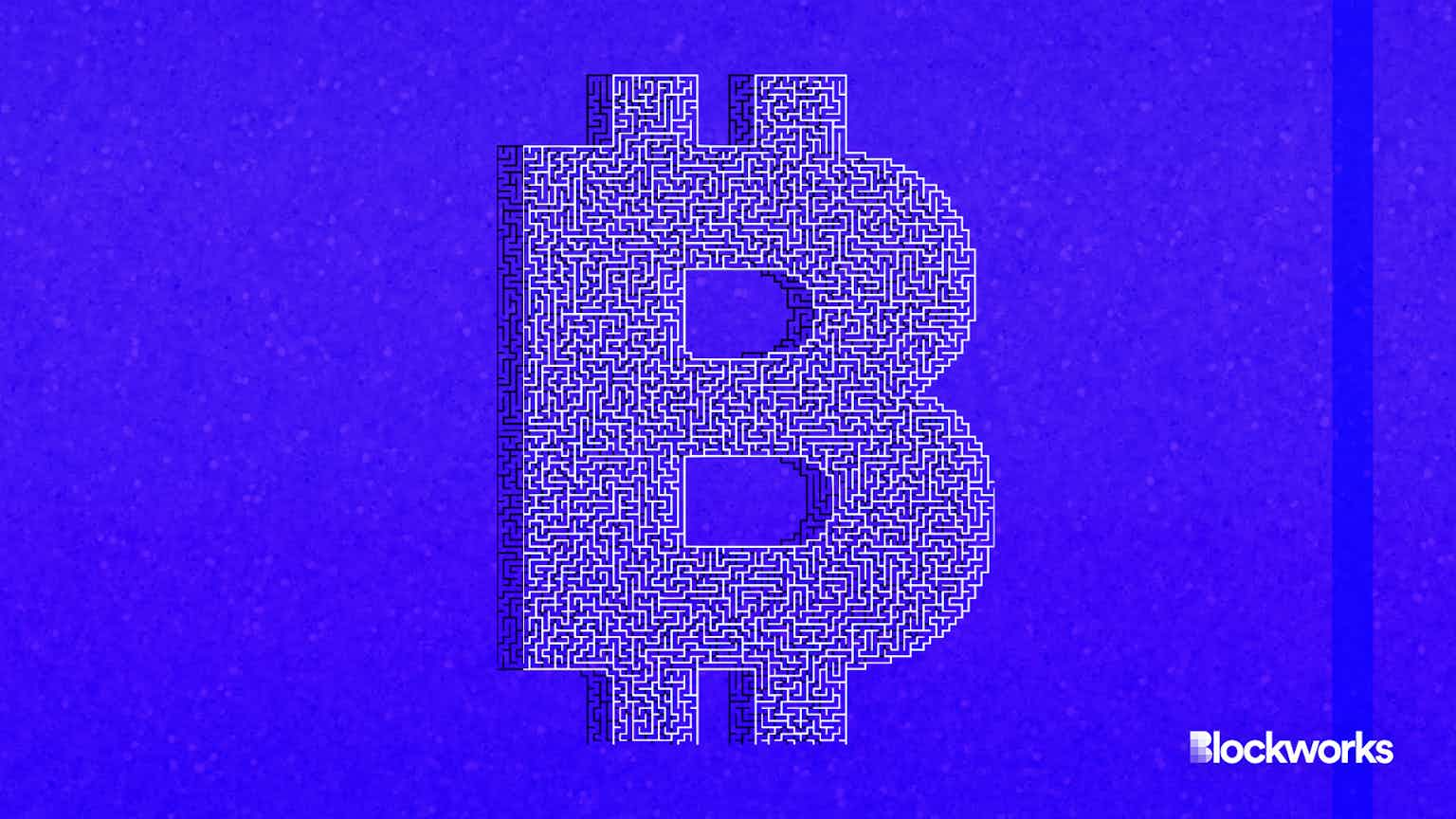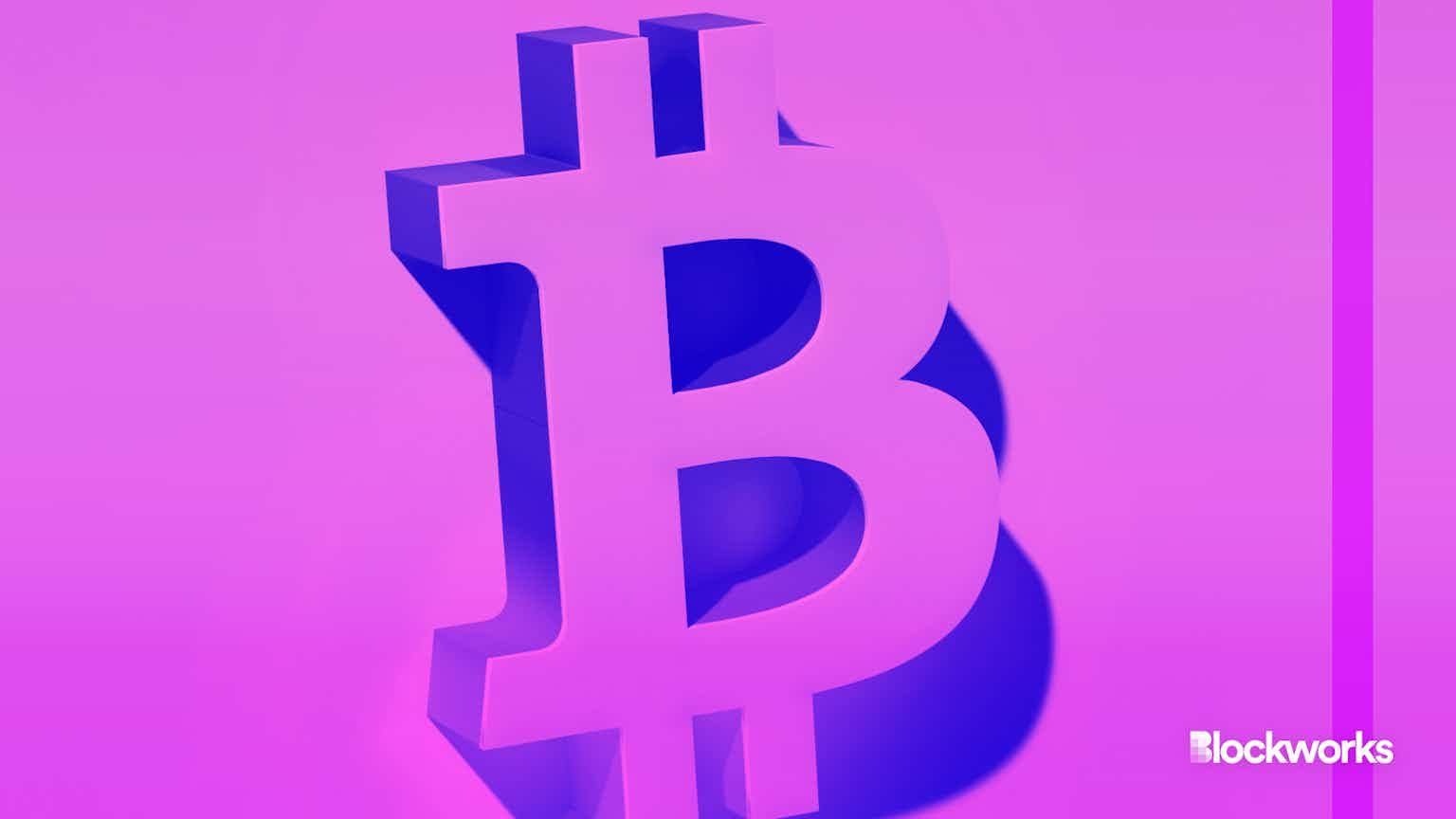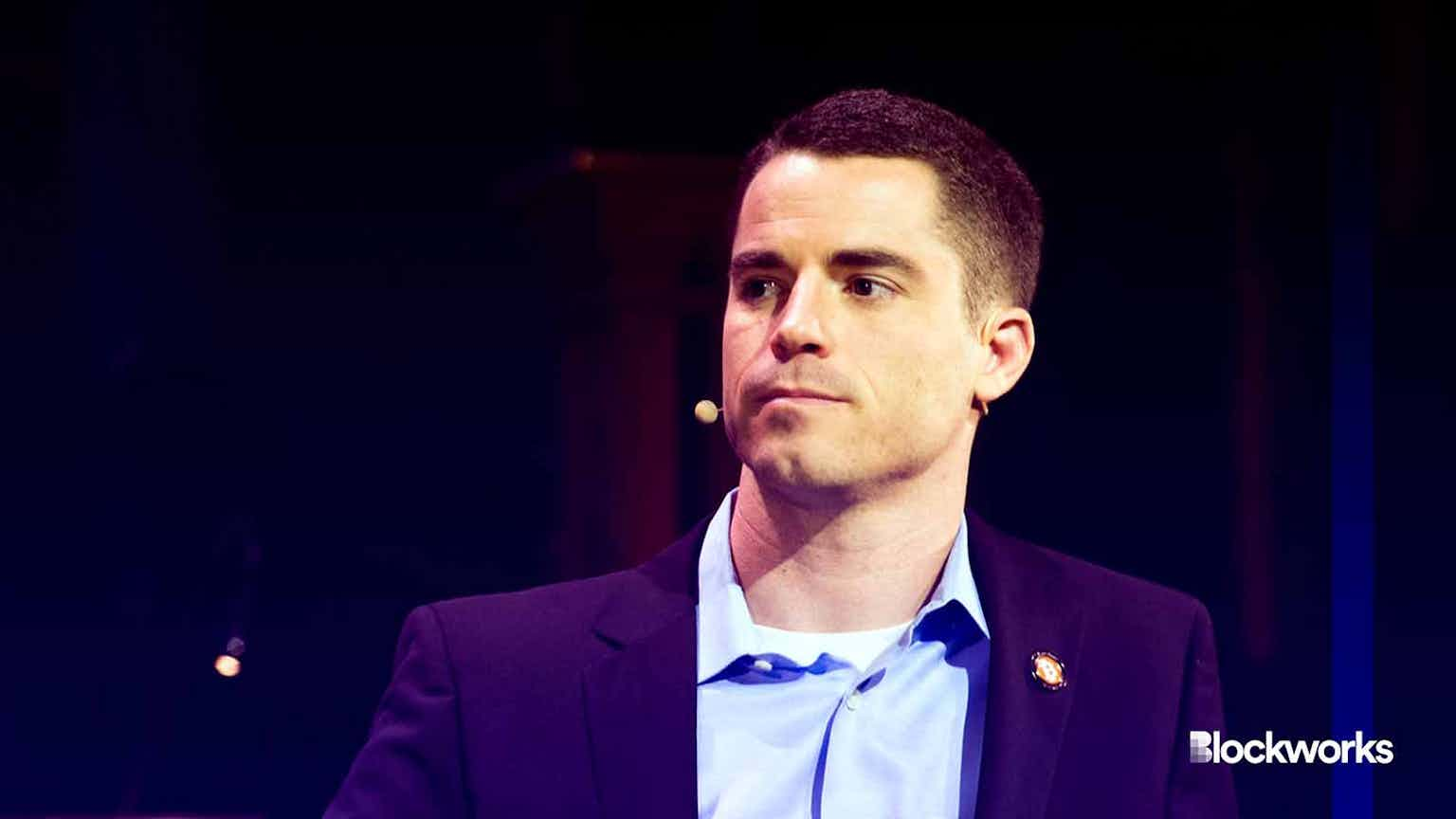Empire Newsletter: Bitcoin’s turn for memecoin mania
Runes, crypto taxes and Binance’s execs stuck in Nigeria
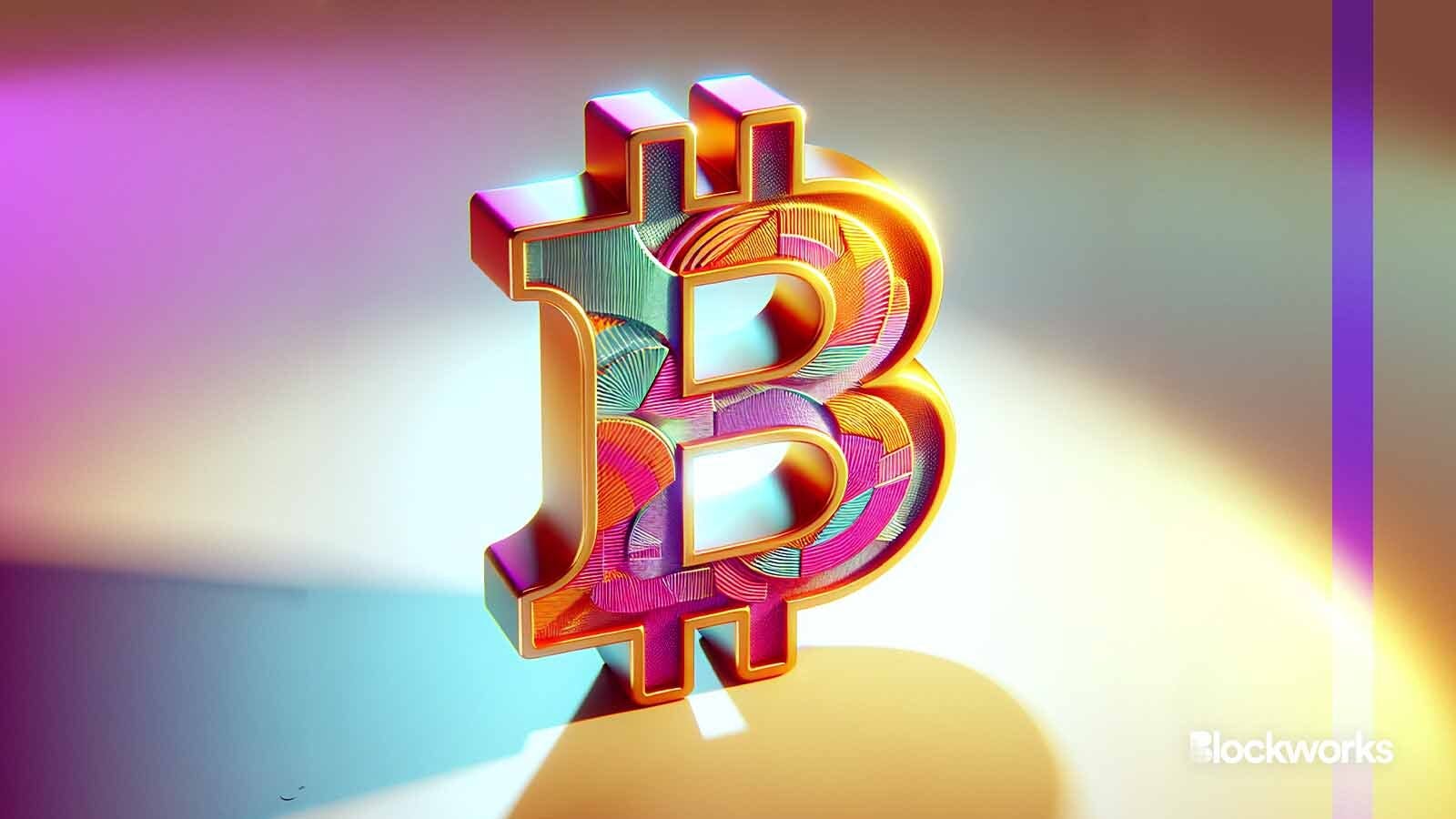
Shutterstock AI modified by Blockworks
Hot ball of memecoin money
After memecoin mania cycles were speed-run on Solana and Base, this weekend was Bitcoin’s turn.
Runes, a new protocol for minting memecoins from Ordinals creator Casey Rodarmor, was released at the same block height as last Friday’s halving. Not for any technical reason — just it made for a neat countdown.
A slew of Rune mints immediately came online, and average transaction fees hit an all-time high of nearly $130, more than double the previous record from the last bull market.
Nearly 53,000 Runes-related transactions were recorded in the first two hours, about one-third more than the overall network’s usual numbers across February and March.
Read more: Bitcoin Runes look to spice up the halving party
Runes made up more than half of all Bitcoin activity on Saturday and Sunday, which explains why fees went berserk. People were willing to splurge to use the chain, as long as it meant minting the first Runes to hit the network.
Now, Runes are down to about 30% of Bitcoin transactions and fees have fallen to $10.60 for high priority. SatScreener, a portal tracking the implied market caps of Runes (over $1.7 billion), has listed more than 7,000 different memecoins, most of them practically worthless, including:
- ALL-YOUR-TICKERS-SUCK
- WADDLE-WADDLE-PENGU
- BITCOIN-NETWORK-CONGESTION
- IDK-HOW-TO-SELL-THIS
This is why Bitcoin’s fee problem is back: memecoins with amusing names.
Runes are fungible memecoins that exist entirely on-chain. With Ordinals, special data (images, sounds, videos, text, browser-compilable code and so on) is written to individual satoshis (sats), imbuing them with non-BTC properties to make them unique and non-fungible.
Those sats become Ordinals, which can then be traded on NFT marketplaces alongside other unique digital collectibles on Ethereum, Solana and other blockchains.
Read more: Solana breaks $200 as memecoin and airdrop interest continue
Pseudonymous developer Domo riffed on Ordinals to create an experimental token standard for fungible assets, BRC-20. BRC-20s are popular — the biggest has a $1 billion market cap — but they can be clunky and data-intensive at scale.
By contrast, Rodarmor intends Runes to be more lightweight. Instructions for Runes are attached to UTXOs rather than individual sats, which means Runes (memecoins) can be ported to the Lightning Network or other similar projects in the future.
Bitcoin’s $130 transaction fees, even fleeting, are still absurd in crypto’s current age of low-cost prioritization before decentralization, trustlessness and even liveness.
Whether high Bitcoin fees are bad depends largely on one’s vantage point. Miners earned a record $80.7 million in fees on Saturday, so likely few complaints there. A trader who spent $50 to mint some Runes, which they then sold for much much more down the line largely wouldn’t care, either.
For someone using Bitcoin to protect their net worth from inflation, $100 fees would be infuriating. It’s practically impossible to know how many people fit into that scenario, but in any case, memecoins are surely pricing out those who need bitcoin most, particularly those with low balances.
Read more: Why is 2140 the end of bitcoin inflation?
And that may always be the reality of Bitcoin. It’s expensive to use. That’s probably okay in a very broad sense; people who want to cheaply move value across borders can send and receive USDT on cheaper networks.
Outside of raising the block size limit or pushing activity to the Lightning Network, the general consensus is that there’s not much anyone can do, at least in the short term.
Bitcoin layer-2s could hypothetically help, but it’s largely dependent on the trust profiles of those networks, as well as how users operate in the future. Besides, Bitcoin layer-2s are all in preliminary development stages, so any potential benefits are far in the future.
Read more: How will the Bitcoin halving impact Bitcoin L2s?
High Bitcoin fees hurt even more with the knowledge that pointless stuff like CASEYS-MOM-HAS-GOT-IT-GOING-ON is driving them higher. But at this point, it just is what it is.
— David Canellis
Data Center
- Fehu, etched in block 840,000, is by far the largest Runes project right now, making up about 70% of the total market.
- Ordinals and BRC-20s contributed less than 1% of all Bitcoin fees on Sunday, compared to Runes’ 34.5%.
- Bitcoin NFT volumes are more than double Ethereum’s over the past week: $104 million to $46 million, according to CryptoSlam.
- Ether is no longer only inflationary over the past week, but also over the month: 4,172 ETH ($13.3 million) has been added to the supply in the past 30 days.
- Hyperliquid and Blast are gaining ground on DEX derivatives leader Arbitrum, with both above $1 billion volume over the past day compared to Arbitrum’s $1.245 billion.
It’s always tax season
The IRS on Friday released its new draft form 1099-DA, the form that “brokers” — a still-undefined term — are supposed to begin using next year to report transactions.
The form asks for wallet addresses and information about where the transactions in question can be found on the blockchain.
“Brokers must report proceeds from (and in some cases, basis for) digital asset dispositions to you and the IRS on Form 1099-DA,” form instructions read. “You may be required to recognize gain from these dispositions of digital assets.”
Read more: Crypto Hiring: IRS’s latest hires are long-time crypto industry colleagues and friends
It looks like the industry spent the weekend dissecting the form and ruminating on the ways it falls short. But remember, this is only a draft. The rule that mandates the creation of a new 1099 hasn’t even passed yet.
If it feels like we’ve been talking about how the IRS defines “broker” for months, that’s because we have.
The IRS and Treasury released proposed regulations for digital asset brokers last August. The Treasury Department added that its preferred rules are intended to crack down on “tax cheats” and bring players in the digital asset industry under the law.
The agencies suggest defining digital asset “brokers” as “trading platforms, digital asset payment processors, certain digital asset hosted wallet providers, and persons who regularly offer to redeem digital assets that were created or issued by that person.”
Individuals who only engage in distributed ledger validation, including miners and stakers, are exempt from broker requirements, at least under the current iteration of the rule.
Read more: Clarity or confusion? Crypto tax proposal earns mixed reactions
Friday’s release, however, had interested parties hung up on whether or not the IRS is suggesting that wallet providers — hosted and unhosted — as well as decentralized platforms should be “brokers.”
Jake Chervinsky, chief legal officer at Variant Fund, said despite his best efforts to engage with regulators, they still don’t appear to get it.
“Great news: We really like filing lawsuits,” he added.
The IRS has once again opened the floor for public comment, but they don’t have a set deadline on when the rule and form will be finalized.
— Casey Wagner
No end in sight?
Imagine this: You’re an executive at a crypto exchange focused on compliance. You pack a bag for a couple of days and board a plane to have meetings in a foreign country about ways your company can collaborate to monitor transactions for financial crimes.
Instead, you are detained and held for over a month before a court ships you off to a notorious prison in Africa.
This is what happened to Binance’s compliance officer Tigran Gambaryan, as well as his colleague Nadeem Anjarwalla.
The story has been stewing over in Nigeria since late February when the two were initially detained. After Anjarwalla was able to escape, the developments took a turn and now Gambaryan is being held at the Kuje correctional facility. The same prison was attacked by the Islamic State as part of a jailbreak back in 2022.
The scenario is unusual at best, and at worst showcases the danger of working in a space like crypto. Gambaryan, despite Binance repeatedly saying that he has “no decision-making power” in the company, is being charged with tax evasion alongside Anjarwalla and the exchange. All three were charged with money laundering.
Read more: Binance says it’s working ‘collaboratively’ with Nigerian authorities
On Friday, the trial was postponed until May 17 because Binance had yet to be served, according to a Reuters report. Gambaryan appeared in court but didn’t enter a plea.
Punch reported early Monday that Anjarwalla, Binance’s regional director in Africa, was arrested by the Kenyan police, and may face extradition to Nigeria as soon as this week.
Earlier this month, a Binance spokesperson told Blockworks that the decision to send Gambaryan to Kuje was “outrageous.”
Binance has a legally checkered past, evident from its multibillion-dollar settlement with the US government last year. Former CEO Changpeng Zhao pleaded guilty to a similar charge as the exchange, and US officials last year said the settlement was meant to send a “message” to crypto.
— Katherine Ross
The Works
- Regulators are stuck on the memory of Facebook’s long-defunct stablecoin project, Libra, according to Bloomberg.
- Crypto VC vet Kathryn Haun said late Friday that she plans to step down from Coinbase’s board of directors.
- Germany’s central bank has begun working with MIT on CBDC research.
- The NYSE seems to be nodding at crypto exchanges and stock apps by surveying market participants on the merits of 24-hour, around-the-clock stock trading, the FT writes.
- AI deep fakes, a long-time crypto scam tactic, are roiling a national election in India, Reuters reports.
The Morning Riff
We know bitcoin miners run hot, but this feels a bit on the nose.
CNBC reports that Gridless, a company backed by Jack Dorsey of Block and (formerly) Twitter fame, has set up shop near an extinct volcano in Kenya.
The bitcoin mining sector is no stranger to geothermal power sources; places like Iceland and South America are home to firms that have tapped the earth’s heat to spin turbines and light up ASICs.
Maybe Gridless has cracked the code on powering through the tough post-halving reality for bitcoin miners — let’s just hope the volcano doesn’t decide to wake up one day.
— Michael McSweeney
Start your day with top crypto insights from David Canellis and Katherine Ross. Subscribe to the Empire newsletter.

